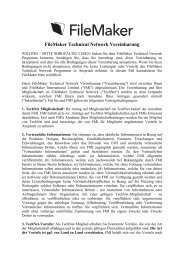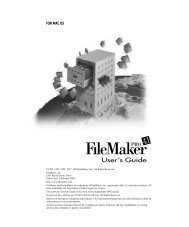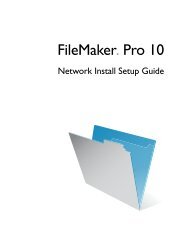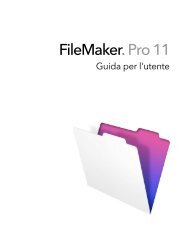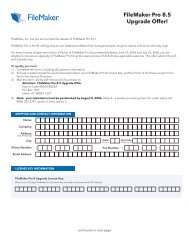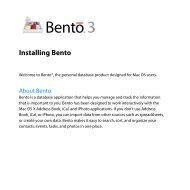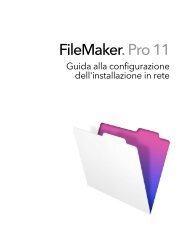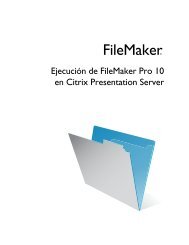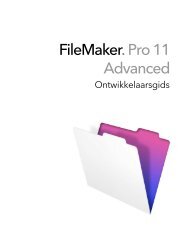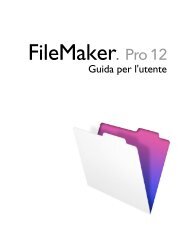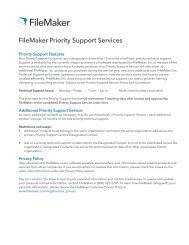FileMaker Security Guide
FileMaker Security Guide
FileMaker Security Guide
You also want an ePaper? Increase the reach of your titles
YUMPU automatically turns print PDFs into web optimized ePapers that Google loves.
Tips for creating effective passwords<br />
Build security into your solutions 19<br />
• Secure passwords are more than eight characters in length, and include mixed upper and<br />
lowercase letters and at least one numeric digit. Consider combining two unrelated words, and<br />
swapping letters out for numbers, for example, b0att!me (swapping a zero for “o” and an<br />
exclamation point for an “i”).<br />
• If files are web-published, account names and passwords should only use printable ASCII<br />
characters, for example a-z, A-Z, and 0-9. For more secure account names and passwords,<br />
include punctuation characters such as “!” and “%,” but do not include colons. If you’re hosting<br />
databases with <strong>FileMaker</strong> Server Advanced, enable SSL encryption.<br />
• Passwords are less secure when they include strings that are easily guessed, such as names<br />
(especially the names of family and pets), birth dates, anniversary dates, and the words<br />
password, default, master, admin, user, guest, client and similar standard terms.<br />
• Change passwords frequently, perhaps every 30 or 90 days.<br />
• Use passwords only once.<br />
• Wherever possible, assign a unique password for each user. If you must share user accounts, be<br />
sure to change the password regularly.<br />
• Do not record your passwords in a master file or list unless the file or list is well secured.<br />
• Do not share user accounts with other users; users should only receive account names and<br />
passwords from file administrators.<br />
Considerations when hosting files with <strong>FileMaker</strong> Server<br />
Keep the following points in mind when hosting databases with <strong>FileMaker</strong> Server:<br />
• If you enable remote access, be sure to require a password. See the <strong>FileMaker</strong> Server online Help<br />
for more information.<br />
• Store <strong>FileMaker</strong> Pro files on a local server (not on network directories). One of the most<br />
important performance factors is reading and writing data quickly to disk.<br />
• Disable file sharing or ensure that files hosted by <strong>FileMaker</strong> Server cannot be accessed directly<br />
by users. If a <strong>FileMaker</strong> Pro file can be copied from a file server, it is vulnerable to attack “off<br />
line.” For example, group names for accounts authenticated with the external server feature are<br />
stored as text strings. If the group name is reproduced on another system, the copied file can be<br />
accessed with the privilege set assigned to the members of the group, which might expose data<br />
inappropriately. For more information, see “<strong>Security</strong> enhancements in <strong>FileMaker</strong> Server” on<br />
page 15.<br />
• Suppressing a filename in the Open Remote dialog box, or the Instant Web Publishing Database<br />
Homepage is not a replacement for using accounts and privileges to protect a file.<br />
• <strong>FileMaker</strong> Server command line interface (CLI) commands can include account names and<br />
passwords. Make sure that unauthorized users cannot view passwords that are part of CLI<br />
commands typed onscreen. To limit access to script files and batch files that contain CLI<br />
commands with passwords, use the file ownership and permissions features of your operating<br />
system.



